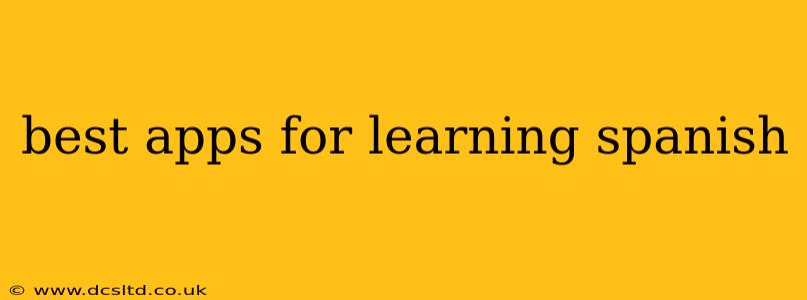Learning a new language can be a rewarding journey, and Spanish, with its rich culture and widespread use, is a popular choice. The digital age offers a wealth of resources, and language learning apps are leading the charge. But with so many options, choosing the best app for your learning style can be overwhelming. This guide will break down some of the top contenders, helping you find the perfect fit for your Spanish-learning adventure.
What Makes a Great Spanish Learning App?
Before diving into specific apps, let's define what constitutes an excellent language learning tool. A top-tier app should offer:
- Structured Lessons: A clear progression of learning materials, building upon previously learned concepts.
- Engaging Content: Multimedia elements like audio, video, and interactive exercises to keep you motivated.
- Personalized Learning: Adaptive technology that adjusts to your pace and areas of strength/weakness.
- Regular Practice Opportunities: Opportunities for speaking practice, vocabulary building, and grammar review.
- Community Features: The ability to connect with other learners for support and conversation.
Top Spanish Learning Apps: A Detailed Look
Here's a breakdown of some of the best Spanish learning apps, categorized for easier navigation:
Duolingo: Fun and Gamified Learning
Duolingo is a household name in language learning, known for its gamified approach. It uses points, streaks, and leaderboards to keep you motivated. While not the deepest in terms of grammar explanations, it excels at building vocabulary and basic conversational skills through bite-sized lessons.
Pros: Free version offers a substantial amount of content, fun and engaging interface. Cons: Can sometimes feel overly simplistic for advanced learners, grammar explanations could be more detailed.
Babbel: Comprehensive and Structured Lessons
Babbel focuses on practical language acquisition, emphasizing real-world conversations and vocabulary. It offers more detailed grammar explanations than Duolingo and includes speech recognition to help you improve pronunciation.
Pros: Strong focus on grammar, realistic conversational practice, effective speech recognition. Cons: Primarily a subscription-based service, can be less engaging than some gamified alternatives.
Memrise: Mnemonics and Memory Techniques
Memrise utilizes mnemonics and memory techniques to help you retain vocabulary. It incorporates flashcards, videos, and interactive games to keep learning varied and enjoyable.
Pros: Effective vocabulary building, memorable learning techniques, diverse learning methods. Cons: Grammar explanations can be less comprehensive than other apps, relies heavily on memorization.
Rosetta Stone: Immersion and Natural Language Acquisition
Rosetta Stone takes an immersion approach, focusing on recognizing and using words and phrases within context. While it doesn't explicitly teach grammar rules, it emphasizes natural language acquisition.
Pros: Immersion-based learning, focuses on practical communication, excellent for building fluency. Cons: Can be quite expensive, limited grammar explanations, less suitable for those who prefer structured learning.
HelloTalk: Language Exchange and Community Focus
HelloTalk stands out for its emphasis on community and language exchange. It allows you to connect with native Spanish speakers for conversation practice, providing valuable real-world experience.
Pros: Excellent for conversational practice, connects you with native speakers, fosters language exchange. Cons: Relies heavily on user interaction, less structured than other apps, requires self-discipline.
Which App is Right for You?
The best app for learning Spanish depends on your individual learning style, goals, and budget. Consider the following:
- Learning Style: Do you prefer gamified learning, structured lessons, or immersion?
- Budget: Are you willing to pay for a subscription, or are you looking for free options?
- Goals: Are you aiming for basic conversational skills, fluency, or a specific area like business Spanish?
Experiment with the free versions of several apps to find the best fit. Many offer free trials or limited free content, allowing you to test the waters before committing to a paid subscription.
Beyond the Apps: Enhancing Your Spanish Learning
While apps are valuable tools, remember that they are just one piece of the puzzle. Supplementing app learning with other resources, like:
- Spanish Language Courses: Online or in-person classes offer structured learning and interaction with instructors.
- Spanish Media: Watching movies, listening to music, and reading books in Spanish helps immerse yourself in the language.
- Language Exchange Partners: Connecting with native speakers for conversation practice is crucial for fluency development.
By combining app-based learning with these supplementary resources, you'll significantly accelerate your Spanish language acquisition journey and achieve your language goals. Remember, consistency and active engagement are key!
